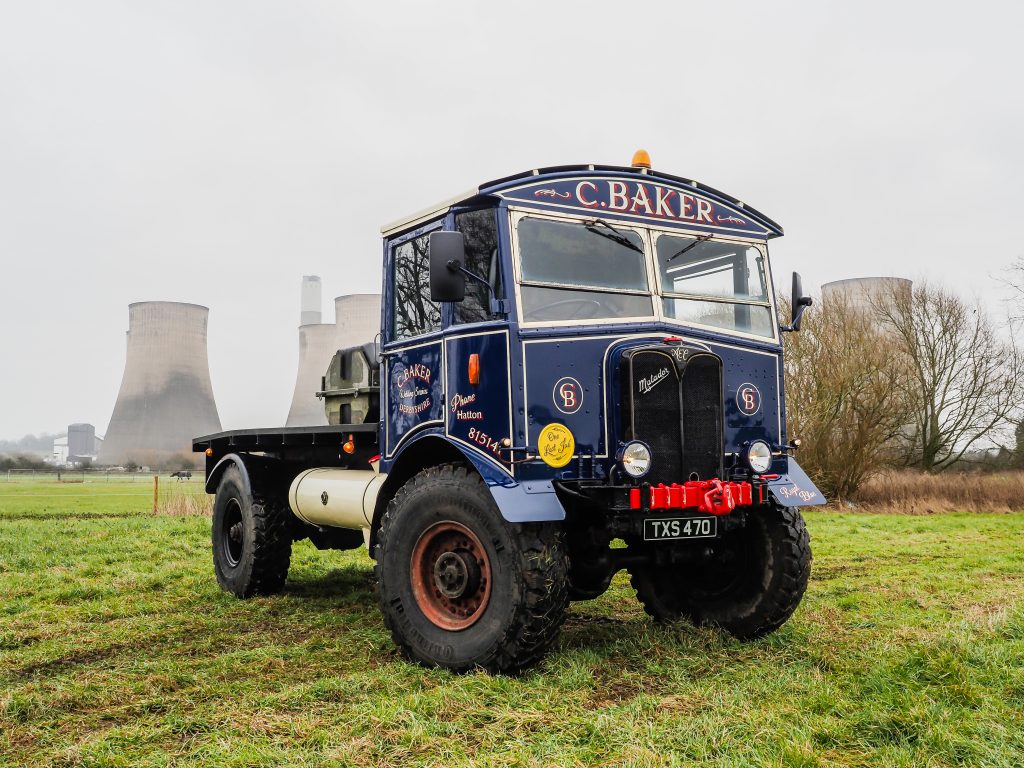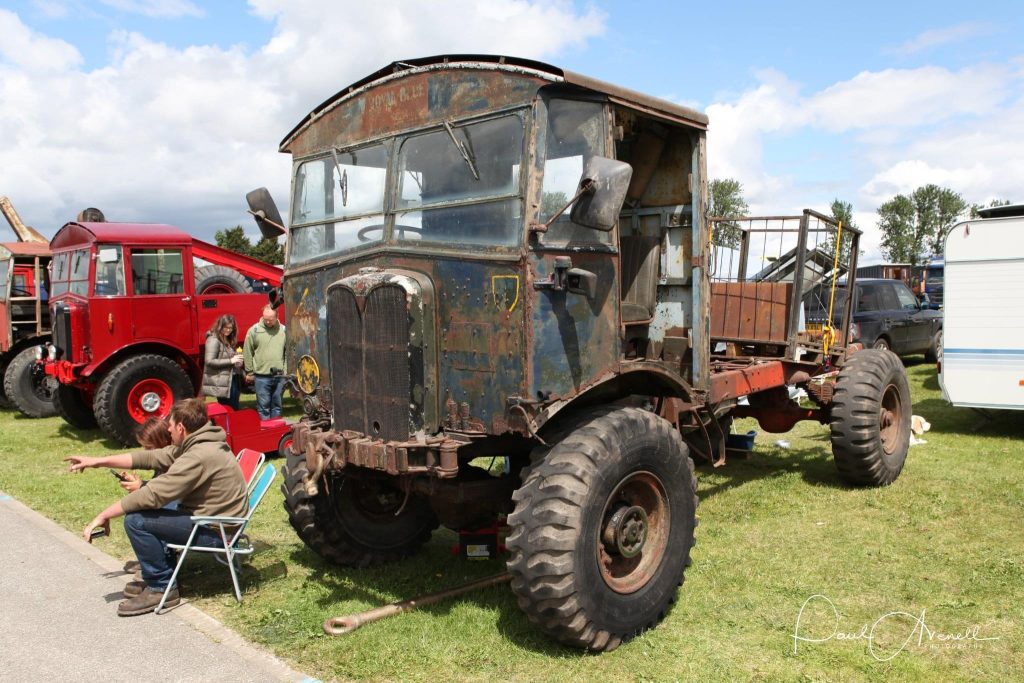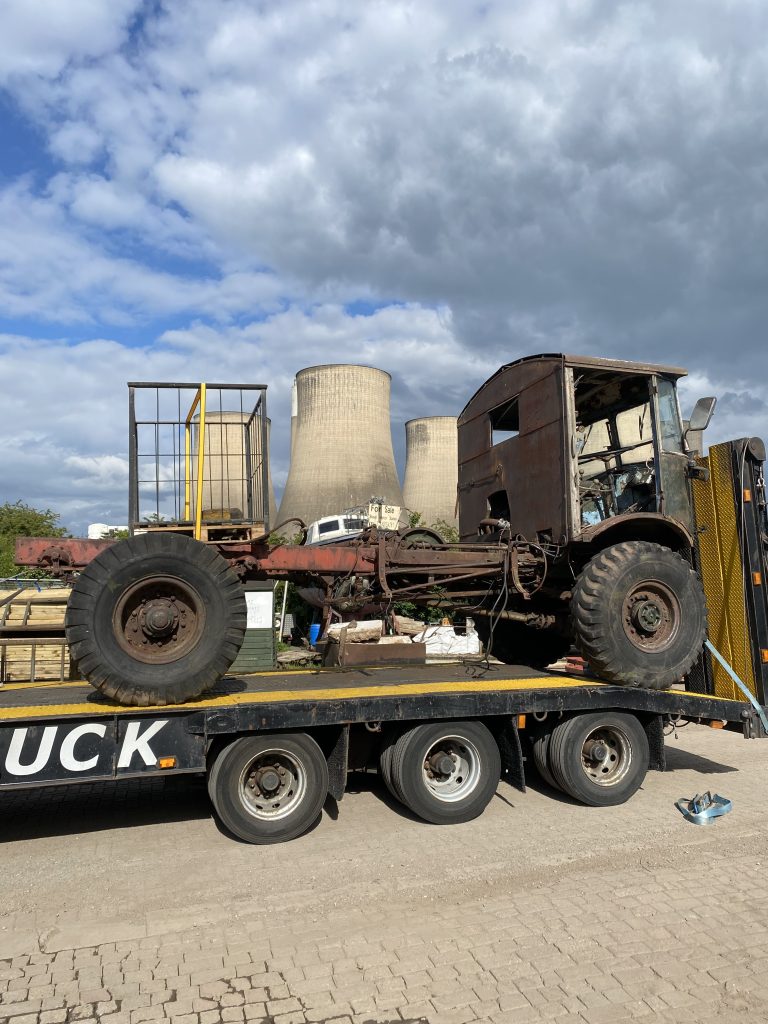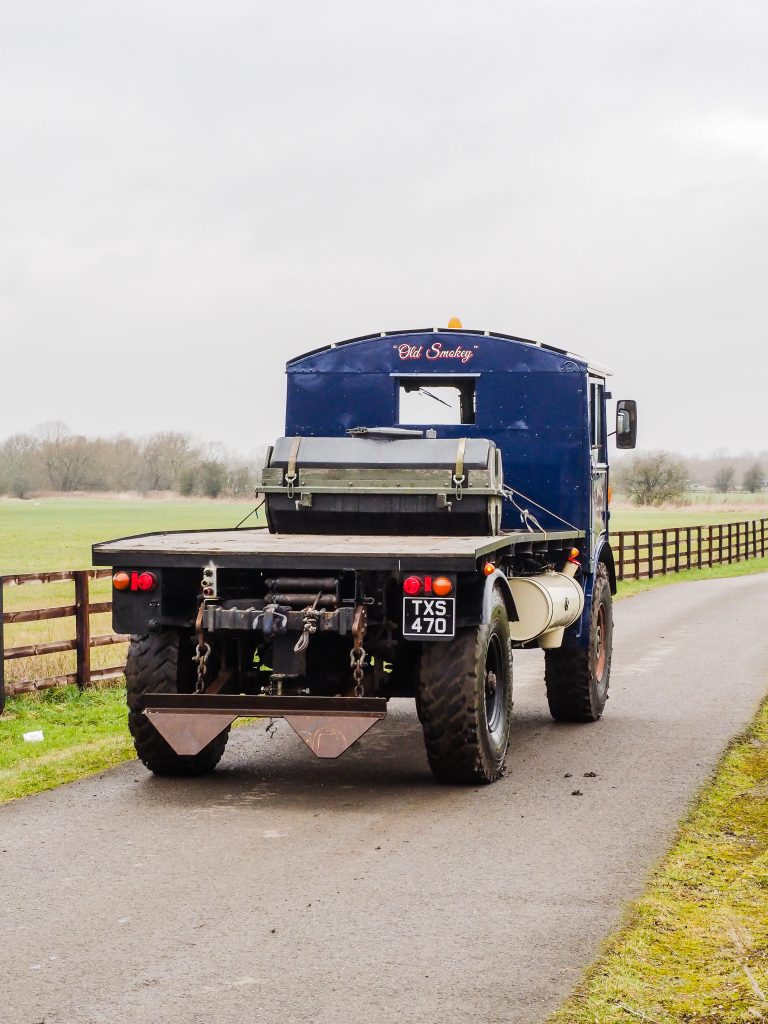When Connor Baker bought his 1939 AEC Matador, it hadn’t run for over 20 years. Within four days he had it running, and within four weeks it was roadworthy. Now it does 7500 miles a year, and is used for business as well as pleasure. Peter Simpson tells the story…

It’s May 26 2022, two days before that year’s annual AEC Rally at Newark Showground. 27-year-old Matador fan Connor Baker was helping his good friend Darryl Blakemore prepare his AEC Matador for the event. In this case, however, ‘preparation’ wasn’t just a bit of cleaning and polishing; they were due to set off for Newark “about lunchtime” on Friday, but Connor and Darryl spent most of Thursday evening refitting the pistons into the engine block.
But it all came together, Darryl drove the AEC to Newark, and parked up alongside another Matador. This one, however, was not in a good way. It was entered by well-known Matador ‘guru’ Matt Foster, and arrived on a low-loader, having not run for at least 20 years. It was basically a chassis-cab unit with a couple of pallet-boxes full of assorted bits on the back. The engine was seized solid, and missing a number of key components including the starter motor, injectors and injection pump.
Connor, however, saw potential. At this point I should point out that though relatively young, Connor does have significant making and mending skills. He is a welder/fabricator by trade. He lives, with his partner Darcy, on a 45ft canal boat that he bought in virtually scrap condition and rebuilt “from bow to stern.”
Family connection
He also has something of a family connection with lorries and road transport. His grandfather Bernard Rhodes was for many years an owner driver, based in Smethwick and specialising in runs to the middle east with engine blocks. He also, apparently had the first four-headlight DAF to operate from the UK.
Then, from 1999 to 2009 he ran the Salt Box Transport Café on the A511 at Hatton in Derbyshire where until it closed last year, generations of lorry drivers stopped to refuel themselves. The site is now being redeveloped as a care home.
Anyway, as is kind-of traditional at the AEC Rally, on the Friday night a certain amount of alcohol was consumed, and part-wat through the session, Connor, having established that Matt had taken the Matador to Newark with the intention of selling it, asked Matt what he wanted. Matt told him to ask again in the morning, when he was sober…
Manky Matador
So next morning Connor did just that, and was told that the price was £5000. Connor said yes, and set to work immediately. And I really do mean immediately, because by the time the rally ended on Sunday evening, thanks to copious quantities of cheap imitation Coca Cola plus ‘gentle persuasion’ from Connor and Darryl, the engine was free and turning over.

But we’re getting a bit ahead of ourselves here, because before describing the restoration, it’s appropriate to talk a little more about the actual vehicle which Connor had purchased, because it’s a bit special…
Matadors in WW2
Over 9600 Matadors were built for war service between 1938 sand 1945, for use by the army and RAF. The latter used them predominantly as refuelling tankers. Threse were modelled by Airfix and formed half of the RAF Refuelling Set. Some Matadors were fitted with flat bodies as general load carriers. In army service, the Matador’s main role was as an artillery gun tractor, towing the 5.5in medium gun and the QF 3.7in gun. In the back, it carried ammunition, along with the gun crew. This version of the Matador, with its gun, was also modelled by Airfix.
Connor’s Matador is a very early one. It’s number 278 off the production line in fact, and new in 1939. He has also discovered that it was allocated to the “Crusader” Regiment. That name, and this Matador’s double-skinned cab roof, might imply operation somewhere in the middle east. It was, according to Connor, fitted with a petrol engine when new. The 7.7 litre straight-six AEC diesel was fitted by the army post-war.
Sold in 1967
It left army service in 1967 and was sold in the 90th sale at Rudington on June 9. The buyer was a scrap dealer, but rather than brreaking it, he resold the Matador to Peter Crouch of Royal Blue Transport of Kettering. He converted it into a breakdown/recovery vehicle and ran it until the late 1980s. It then passed to Crouch Recovery who sold it into fairground service. Crouch, however, subsequently bought the AEC back, and they sold it to Matt Foster the day before he sold it to Connor.
Matador Moves
As I say, Connor had the engine turning over, before the AEC left Newark Showground. Once he got it home, he, along with Darryl, set to work very quickly . By the following Thursday evening it was, for the first time in 20 years, running and driving under its own power,. This was from a can of fuel adjacent to the lift pump. Matt Foster had provided replacements for the missing engine components.

Other components, including the main compressor, had seized. Connor’s preferred freeing agent is copious quantities of red diesel. Besides being highly effective, it’s a lot cheaper than penetrating oil. It was also readily available at the residential boatyard where the work was undertaken.
Somewhat surprisingly given such a long layoff, the clutch hadn’t seized. The various brake components had, however. These Connor bought freed using a combination of acetylene flame and red diesel. Obviously using a naked flame and flammable liquid for a task like this requires a lot of care. It isn’t something we in any way recommend!
Matador Brakes
The air tank and rear brake chambers were missing. Again Matt Foster supplied replacements, while Connor renewed “around 90%” of the airlines. Again they made rapid progress and within ten days the brakes were fully operational.
After some further general fettling to complete making the AEC roadworthy, plus application of a fresh coat of paint to the cab so it didn’t attract unwelcome attention, Connor then drove his Matador to its first rally just four weeks after buying it! Further work was of course needed. Somewhat surprisingly, the cab was remarkably solid and is still substantially original.
Skin and bones
Commor fitted new skins to the doors and quarter-panels. He also renewed the ash driver’s side windscreen and door posts. The door post Connor cut to shape himself, but the screen pillar he bought, ready-made, from Matt Foster. In Connor’s words, “had it been all-metal I’d have done it myself, but to be honest I’m not really that good with wood.”
Connor designed and made the flat body from scratch; this year the plan is to add a Hiab-type crane. He also intends working on the cab interior in due course; this is still substantially as purchased. The outside, however, has been transformed by a fabulous coat of Royal Blue two-pack. Bertie Stafford applied this, while Clare Norman made a splendid job of the signwriting.
Tyres and wire
Other mechanical work has included a new set of Continental tyres, and a complete rewire. With the later, Connor had a bit of luck. He bought a brand new Matador electrical board (the panel containing switches, four fuses and so on which acts as a sort of wiring junction box) from a man in Kent, via Facebook marketplace. The wiring is somewhat unusual. Everything has its own feed and return connection to the main board, and there are no chassis earth connections. The boatrd sits on the cab back panel, next to the driver’s head.
Connor found one significant mechanical early on. The engine kept blowing head gaskets, and Connor concluded quickly that the problem was with his engine block. He tred all the usual fixes – lead solder, filing/filling and so on – without success. Eventually, it became clear that he needed a new block ora new engine.
Early Matador Engine
But there was another issue here. The engine in the Matador was an early type with bottom-fit liners, and Connor was keen to retain this unusual feature. Thankfully, he was able to find a replacement engine, though this was seized. So once again, he bought lots of red diesel from the boatyard and used this to free off and dismantle the donor engine. He then rebuilt it using the replacement block. Everything else, including the crankshaft and liners, he took from the original engine. And with that, the gasket-blowing problem was sorted.
Once this was completed, Connor took his Matador on its first long journey. This was to the Stoke Row Steam Rally at Whitchurch Hill near Reading. That’s about 120 miles each way, towing his shepherd’s hut behind. Further event appearances followed, but Connor’s Matador isn’t just used for shows. He also often uses it to transport his welding kit, especially when access is needed to hard-to-reach places. It’s also sometimes used for winching. His show-attendances also tend to involve travelling long distances; Connor reckons he typically does around 7-8000 miles a year.
Stopping the smoke
For the first two years, no mechanical attention was needed beyond normal level checking and a routine oil change. However, Connor had noticed that the AEC did seem to smoke somewhat – hence the “Old Smoky” name on the back of the cab. However, at last year’s Henham Steam Rally he met up with Matt Foster again. Matt diagnosed almost immediately that the pump timing was out by one tooth. Connor and Matt subsequently reset the timing there and then, and, in Connor’s words, this change “transformed the lorry.” For 2025 he plans to take it to Cornwall. Fuel consumption works out at around 11mpg, and comfortable cruising speed is around 40mph. ”At that speed cab noise is not too bad, and it’s perfectly possible to have a normal conversation.”

Matador Registration Problem
There has been one other noticeable change since Connor returned the AEC To the road; it now sports a period-appropriate registration rather than the Q plate it had when purchased. In army service the Matador would, of course, have carried a military registration – according to the service plate, this was 93-YY-58. When sold, it was never given a civilian registration because at that time recovery vehicles could be driven on the road using their operator’s trade plates. That concession ended in 1988 however and then, in common with most recovery vehicles that had been used in this way, it was allocated a Q registration, indicating a vehicle of unknown or uncertain age.
Connor, clearly, wanted to put that right, but unfortunately, there was a fire at the AEC factory in 1940, which destroyed all production records prior to that date. However the British Commercial Vehicle Museum at Leyland have a complete set of build sheets, and using these plus the chassis number and knowing that 300 Matadors were made in 1939, the BCVM and AEC Society were able to provide a manufacture date of June 1939. an approximate date of manufacture of June 1939. Unfortunately, the DVLA have had a few internal ‘issues’ in recent years but after about 12 months of ‘gentle persuasion’ DVLA agreed to allocate registration TXS470.
Conclusions
And that is the story so far. Connor is a huge Matador fan and this one is clearly being cherished and not only shown but also used. Asked what, exactly, it is that he likes about them, Connor’s answer kind-of says it all. “They’re a fun place to be, it always puts a smile in my face.”
In conclusion Connor would like to thank, through these pages, Darryl Blakemore for practical help throughout the project, Bertie Stafford for the paintjob, Clare for the signwriting and his other half Darcy – who often attends rallies with him for support and encouragement.
To read more articles like this every month, subscribe to Classic & Vintage Commercials magazine by subscribing here. And find the latest news, exclusive looks and more at the CVC website here.


